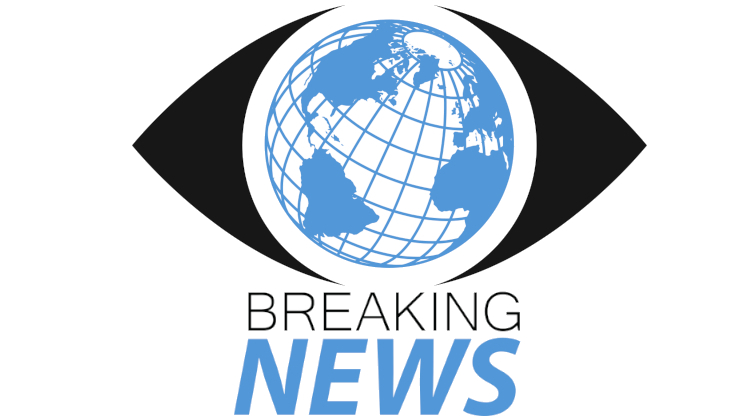
-
 Cricketer De Villiers gets a Masters hit with pal Bezuidenhout
Cricketer De Villiers gets a Masters hit with pal Bezuidenhout
-
Saudi top diplomat in US to prepare for Trump visit

-
 Kvaratskhelia genius helps give PSG Champions League edge against Villa
Kvaratskhelia genius helps give PSG Champions League edge against Villa
-
Sensational Barca destroy Dortmund in Champions League mismatch

-
 Author of explosive Meta memoir stars at US Senate hearing
Author of explosive Meta memoir stars at US Senate hearing
-
King Charles addresses Italian parliament, greets pope on visit to Rome

-
 Dominican Republic ends search for nightclub collapse survivors
Dominican Republic ends search for nightclub collapse survivors
-
Pentagon chief says US could 'revive' Panama bases

-
 Trump stuns with tariff backtrack but punishes China
Trump stuns with tariff backtrack but punishes China
-
King Charles jokes, cites Monty Python at Italian state banquet

-
 Strength in numbers: Latin America urges unity in face of Trump tariffs
Strength in numbers: Latin America urges unity in face of Trump tariffs
-
France could recognise Palestinian state 'in June': Macron

-
 Tariff war could cut US-China goods trade by 80 percent: WTO chief
Tariff war could cut US-China goods trade by 80 percent: WTO chief
-
Europa League success 'massive' for Man Utd, says Amorim

-
 Scheffler tunes out talk of history in Masters title defense
Scheffler tunes out talk of history in Masters title defense
-
Turkey opposition to fight Erdogan 'until the end': leader tells AFP

-
 Argentina braces for 24-hour strike as it awaits news on IMF loan
Argentina braces for 24-hour strike as it awaits news on IMF loan
-
Volkswagen says first-quarter profits impacted by Trump tariffs

-
 Hope fades as deaths mount in Dominican Republic nightclub disaster
Hope fades as deaths mount in Dominican Republic nightclub disaster
-
Herd of animal puppets treks from Africa to Europe in climate action

-
 'Versatile' Sudharsan helps Gujarat to top of IPL table
'Versatile' Sudharsan helps Gujarat to top of IPL table
-
Israel says seizing 'large areas' of Gaza as strike kills 23

-
 Trump stuns with tariffs reversal but hits China harder
Trump stuns with tariffs reversal but hits China harder
-
Amazon to launch first batch of satellites rivaling Musk

-
 Sudharsan, Krishna lead Gujarat to top of IPL table
Sudharsan, Krishna lead Gujarat to top of IPL table
-
Settlement champion Huckabee confirmed as US Israel envoy

-
 Trump pauses tariffs for 90 days but hits China harder
Trump pauses tariffs for 90 days but hits China harder
-
US federal judges halt deportations of Venezuelans under wartime law

-
 No direct LIV path to Masters but Ridley wants one elite tour
No direct LIV path to Masters but Ridley wants one elite tour
-
UK cinemas fight viral 'chicken jockey' trend

-
 Russia denounces brief detention of government employee in France
Russia denounces brief detention of government employee in France
-
Nepal fights wildfires and pollution amidst drier winter

-
 Jamaican speed merchant Thompson seeks fast progress in 2025
Jamaican speed merchant Thompson seeks fast progress in 2025
-
'Horrible' Djokovic falls in Monte Carlo, first win for Alcaraz

-
 Masters chief defends Cabrera invite after domestic violence convictions
Masters chief defends Cabrera invite after domestic violence convictions
-
Pentagon chief in Panama vows to counter China 'threat'

-
 Trump's NASA chief pick says will 'prioritize' Mars mission
Trump's NASA chief pick says will 'prioritize' Mars mission
-
Europe's first Universal theme park to bring 'joy to Britain': PM

-
 Trump tells US to 'be cool' as China, EU strike back
Trump tells US to 'be cool' as China, EU strike back
-
Djokovic crashes out in Monte Carlo, first win for Alcaraz

-
 Over 120 dead in Dominican Republic nightclub disaster
Over 120 dead in Dominican Republic nightclub disaster
-
Delta to trim capacity in light of weakening travel demand

-
 Pressure builds on Afghans fearing arrest in Pakistan
Pressure builds on Afghans fearing arrest in Pakistan
-
From Freddy Kruegers to Peaky Blinders: a look at Ecuador's drug gangs

-
 Postecoglou says 'general sentiment' points to Spurs exit
Postecoglou says 'general sentiment' points to Spurs exit
-
French group gets death threats over renaming of 'Negresse' district

-
 Beijing rejects Ukraine claim 'many' Chinese fighting for Russia
Beijing rejects Ukraine claim 'many' Chinese fighting for Russia
-
Germany 'back on track' says Merz, unveiling new coalition

-
 France struggles to find new home for two orcas after park closes
France struggles to find new home for two orcas after park closes
-
Alcaraz recovers from sluggish start to move into Monte Carlo last 16


How commercial satellites are shaping the Ukraine conflict
From a huge Russian military convoy snaking its way to Kyiv to missile strikes and refugee crossings, commercial satellite imagery of the Ukraine conflict is helping lift the fog of war, illuminating for the public what was previously the domain of spy agencies.
Technologies that can pierce cloud cover and work at night are also coming to the fore, as a growing army of open-source intelligence analysts offer near real time assessments of battleground developments.
"Governments are no longer the only place to go for high precision satellite data," Craig Nazareth, a former US intelligence officer turned scholar at the University of Arizona, told AFP.
Thanks to the explosive growth of the private satellite industry, the volume of imagery is greater and turnaround time faster compared to prior conflicts, such as Russia's 2014 annexation of Crimea.
While most Western governments have their own sophisticated satellite assets, their classified nature means the images can't be shared.
And with public trust in the US and British governments shaken after the 2003 Iraq war, third-party imagery has helped plug credibility gaps.
"They're saying 'Look, it's not us, this is actually happening, we're not making this up," Nazareth said.
Beyond helping shape narratives, the images are directly aiding Ukrainian forces in their war efforts.
"Capella Space is working directly with the US and Ukrainian governments as well as other commercial entities to provide timely data and assistance around the ongoing conflict," Payam Banazadeh, the company's CEO confirmed in a statement to AFP.
- Radar imagery -
It was images taken by the San Francisco startup that led a group of independent researchers to realize the invasion was underway, before Vladimir Putin announced his "special military operations" in the early morning of February 24.
Hours before that speech, Jeffrey Lewis of the Middlebury Institute in California tweeted that Google Maps showed a "traffic jam" on the road from Belgorod, Russia to the Ukrainian border.
It was the precise spot Capella Space previously saw a convoy of military vehicles, and the congestion likely reflected Russian civilians getting stuck at roadblocks while military vehicles passed.
"Someone's on the move," he correctly hypothesized.
While most satellite imaging requires daylight and clear skies to capture images, Capella Space works with synthetic aperture radar (SAR) -- in which sensors shoot down energy, then record the amount that reflects back to them.
SAR "penetrates clouds and smoke, even in very large storm events or fires, so we can reliably capture clear and precise images of the Earth under almost any conditions," said Dan Getman, the company's vice president of product.
Another company whose pictures have been used heavily by news media is BlackSky, which released what it believes was among the first engagements of the war -- an attack on the Luhansk Thermal Power Station a little after 4:00 pm local time on February 23.
"We have a constellation of small satellites that can see dawn to dusk, not just at certain times of the day" the company's CEO Brian O'Toole told AFP.
In traditional polar orbits, which fly north-south, a satellite could take only two snaps of a particular spot per day -- but BlackSky flies its hardware counter-clockwise to the planet's rotation, allowing them to revisit areas more often.
Clients receive the images within 90 minutes, and are helped in interpreting them by AI-enabled software.
- Future ethical concerns? -
Perhaps the most grabbing image of the conflict so far has been a picture of the 40 mile (64 km) long Russian convoy, captured by Maxar, "the granddaddy of the industry," according to Chris Quilty, of Quilty Analytics.
He explained that unlike traditional satellites that only point downwards, Maxar's satellites have gyroscopes that allow them to swivel and target with more precision.
The US government, through the National Reconnaissance Office, is one of Maxar's main clients, dictating "shutter time," which helps explain why the company and others are spending so much time over Ukraine right now.
But the selective release of what the satellites are seeing could eventually lead to ethical concerns.
Maxar and others "are inevitably capturing imagery of Ukrainian troop movements and defensive positions and that information is not being released to the public," said Quilty.
Looking ahead to future conflicts, "There is absolutely an ability to color the narrative depending upon what imagery is made available," he said.
O.Lorenz--BTB
